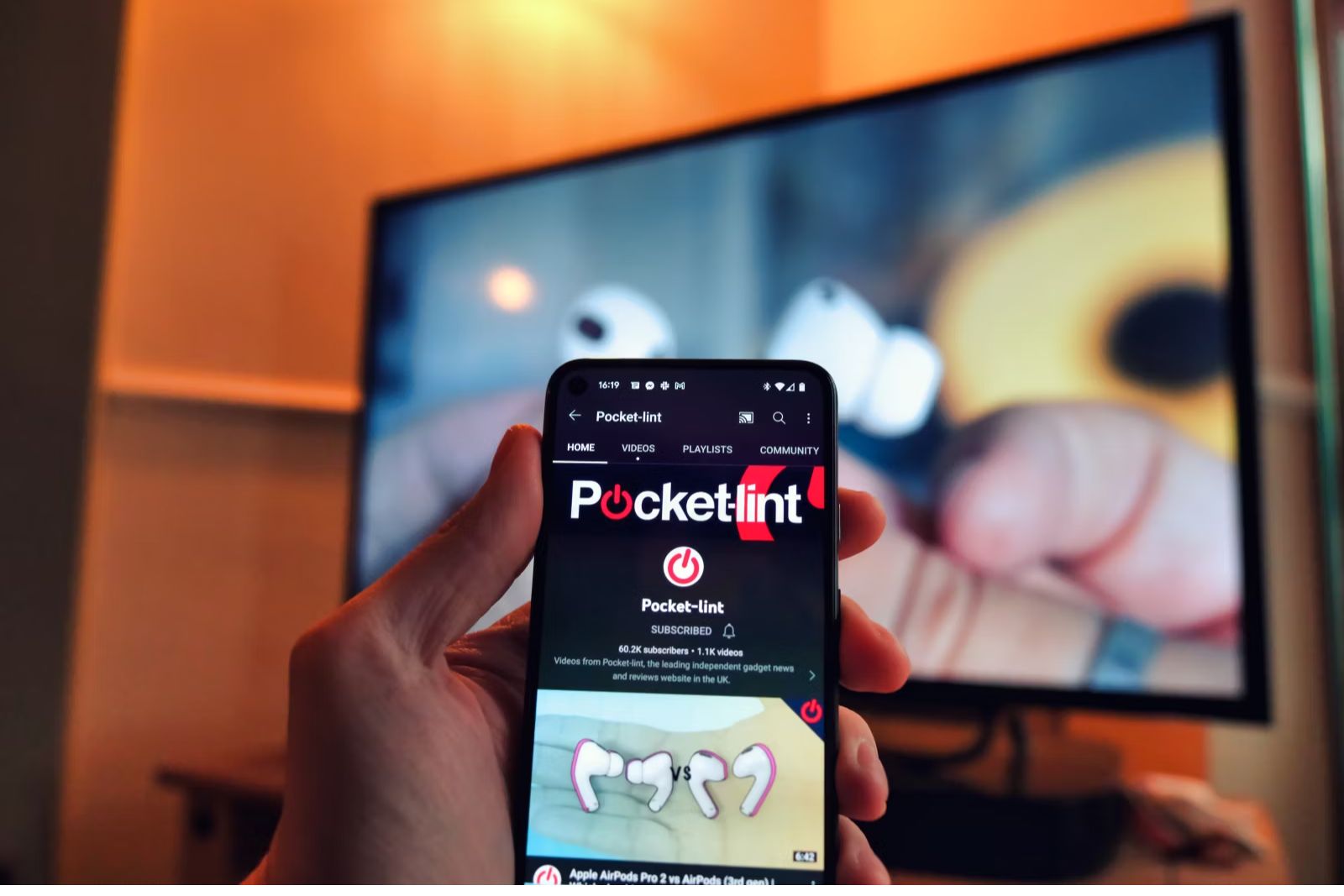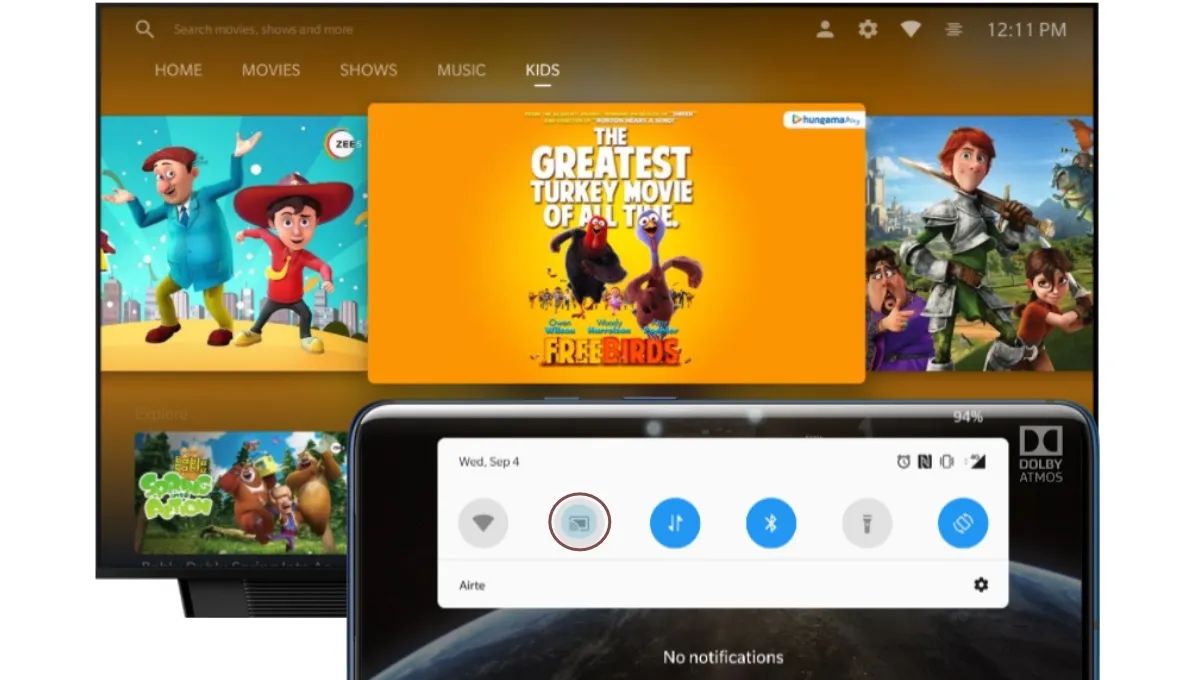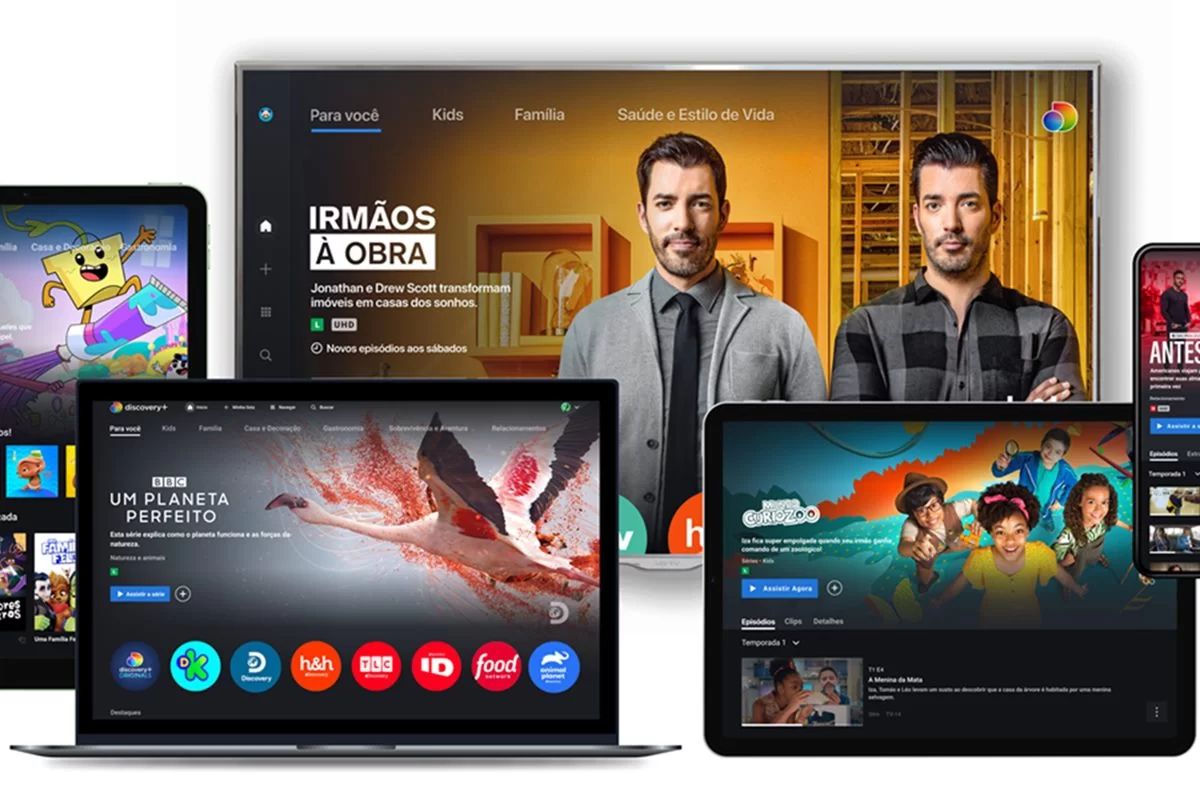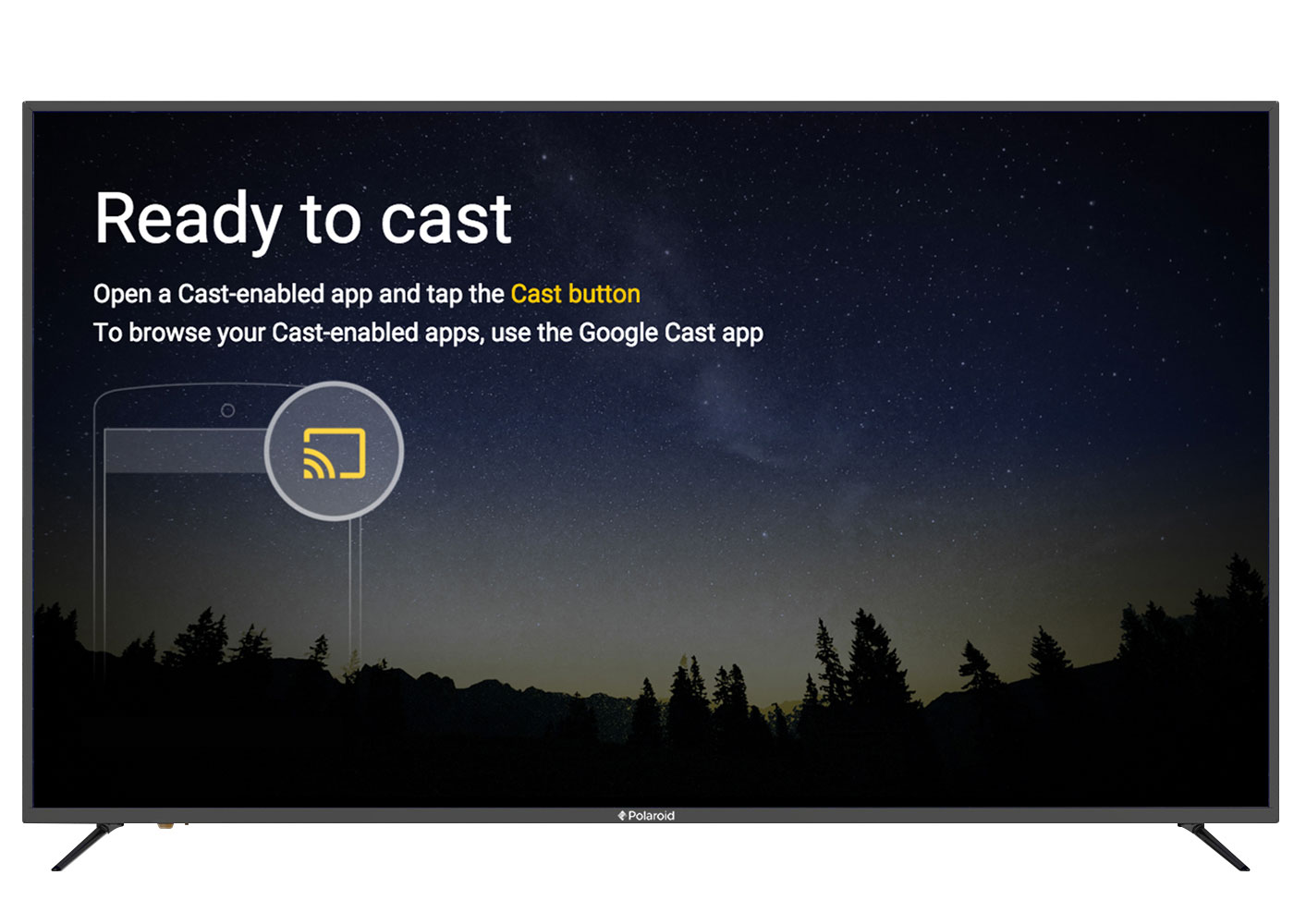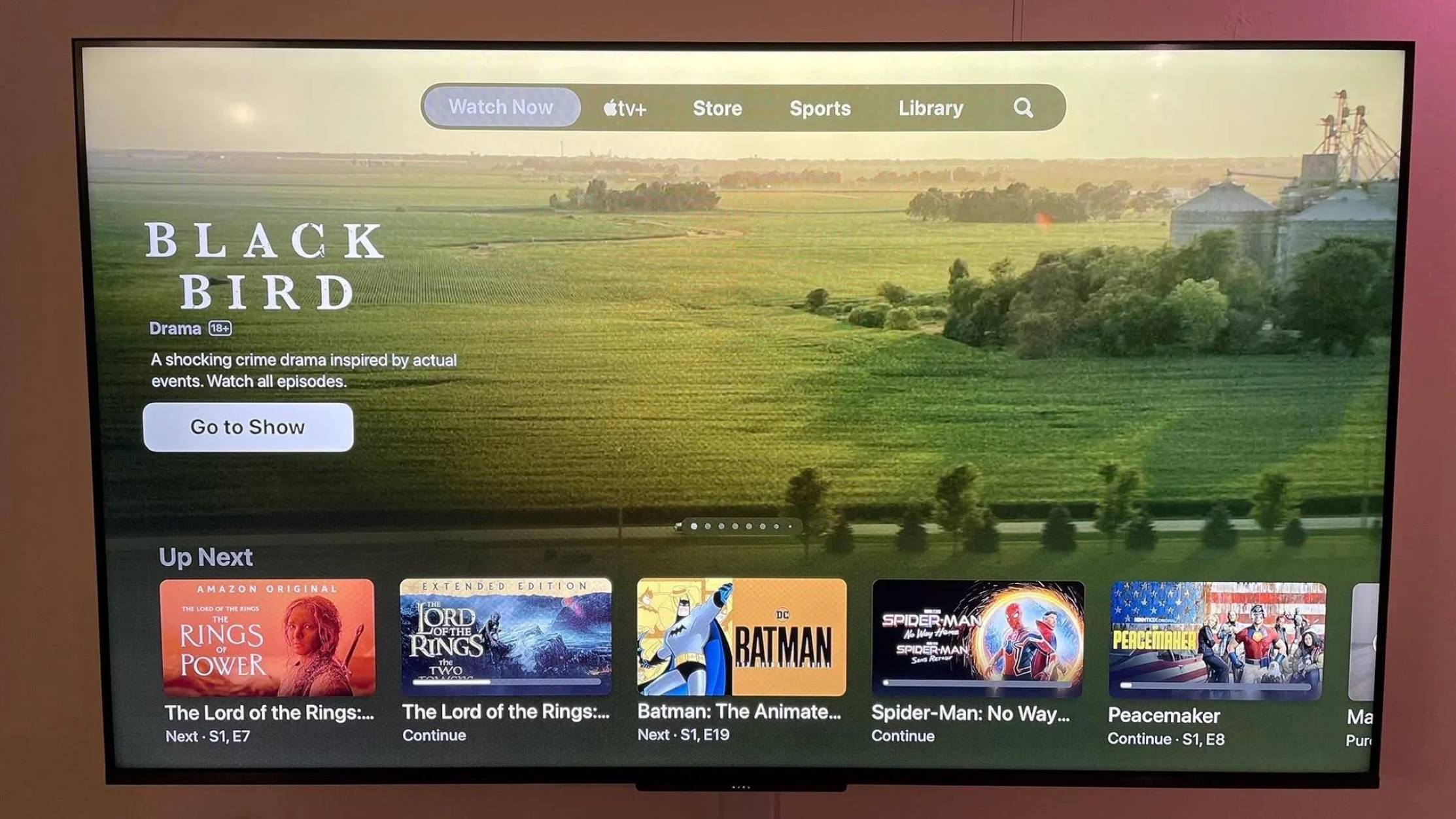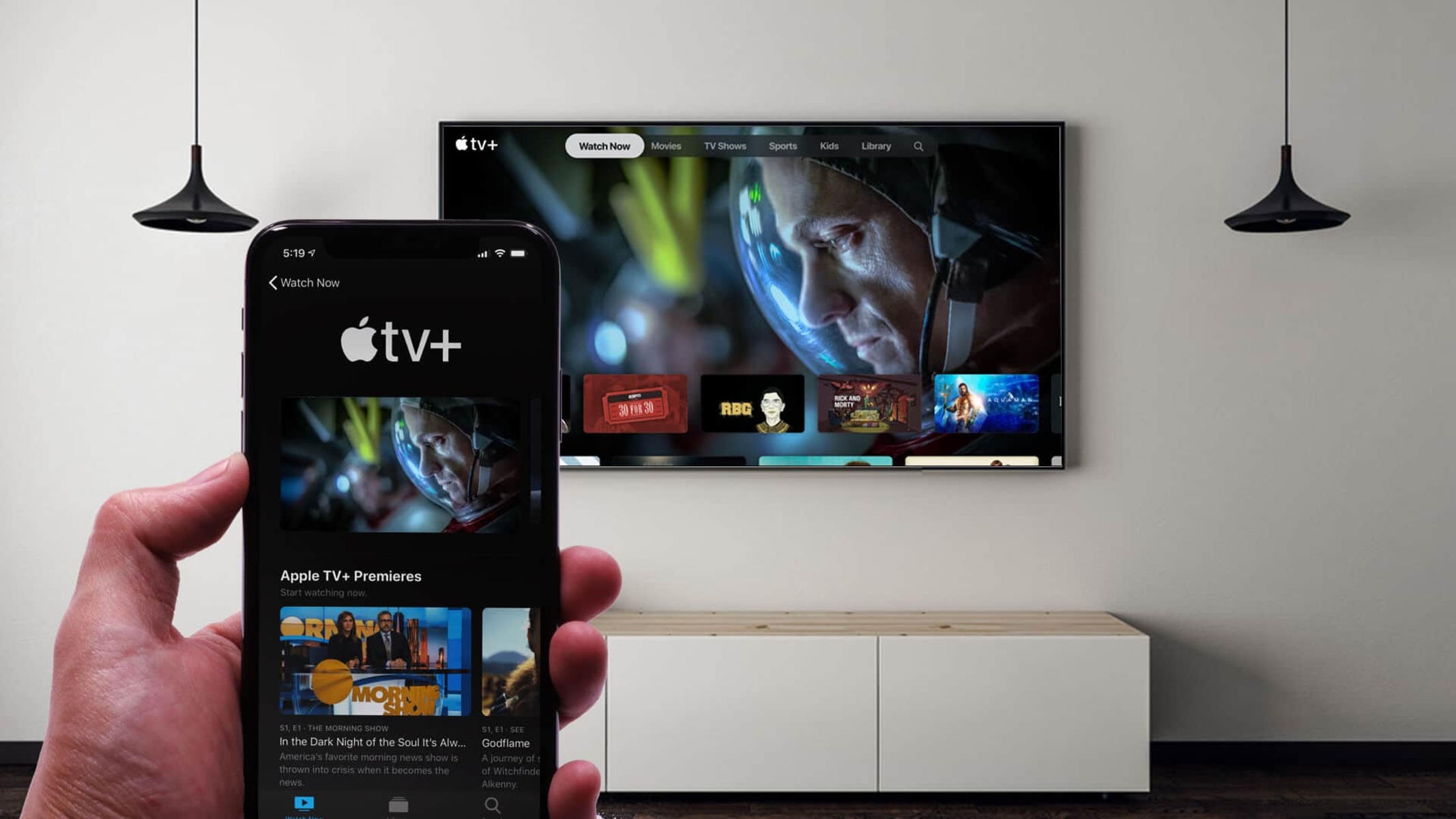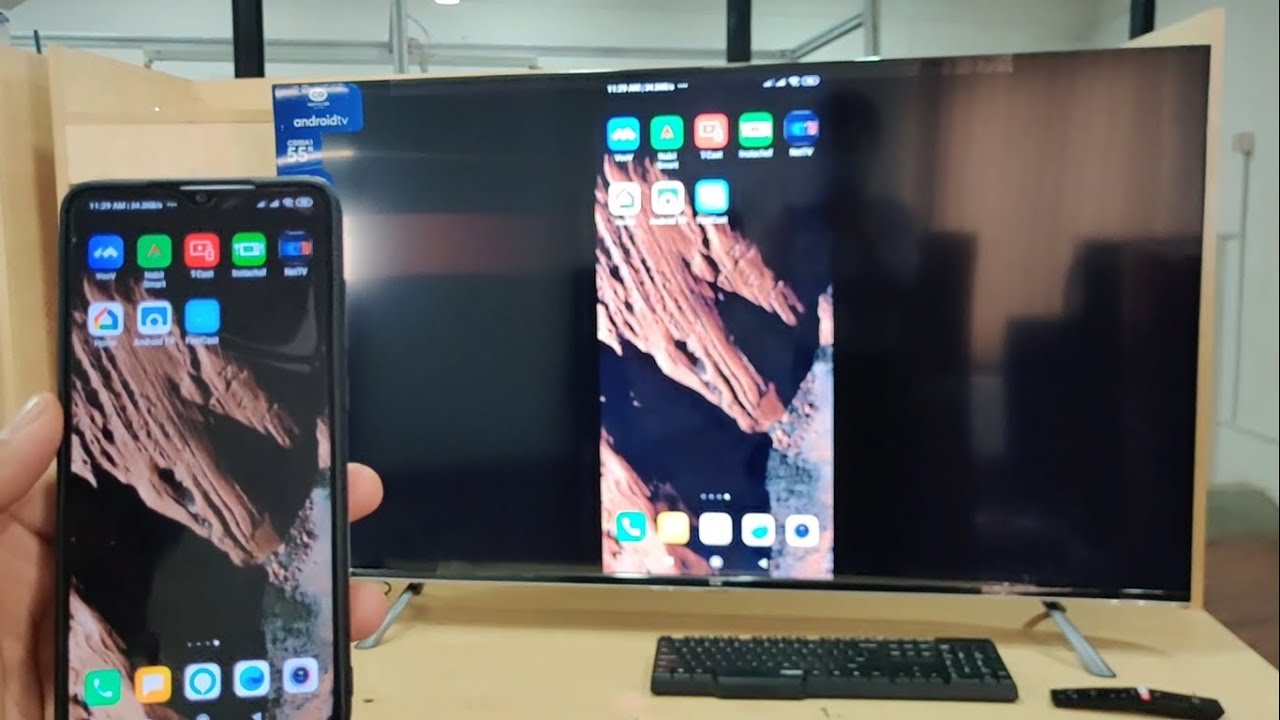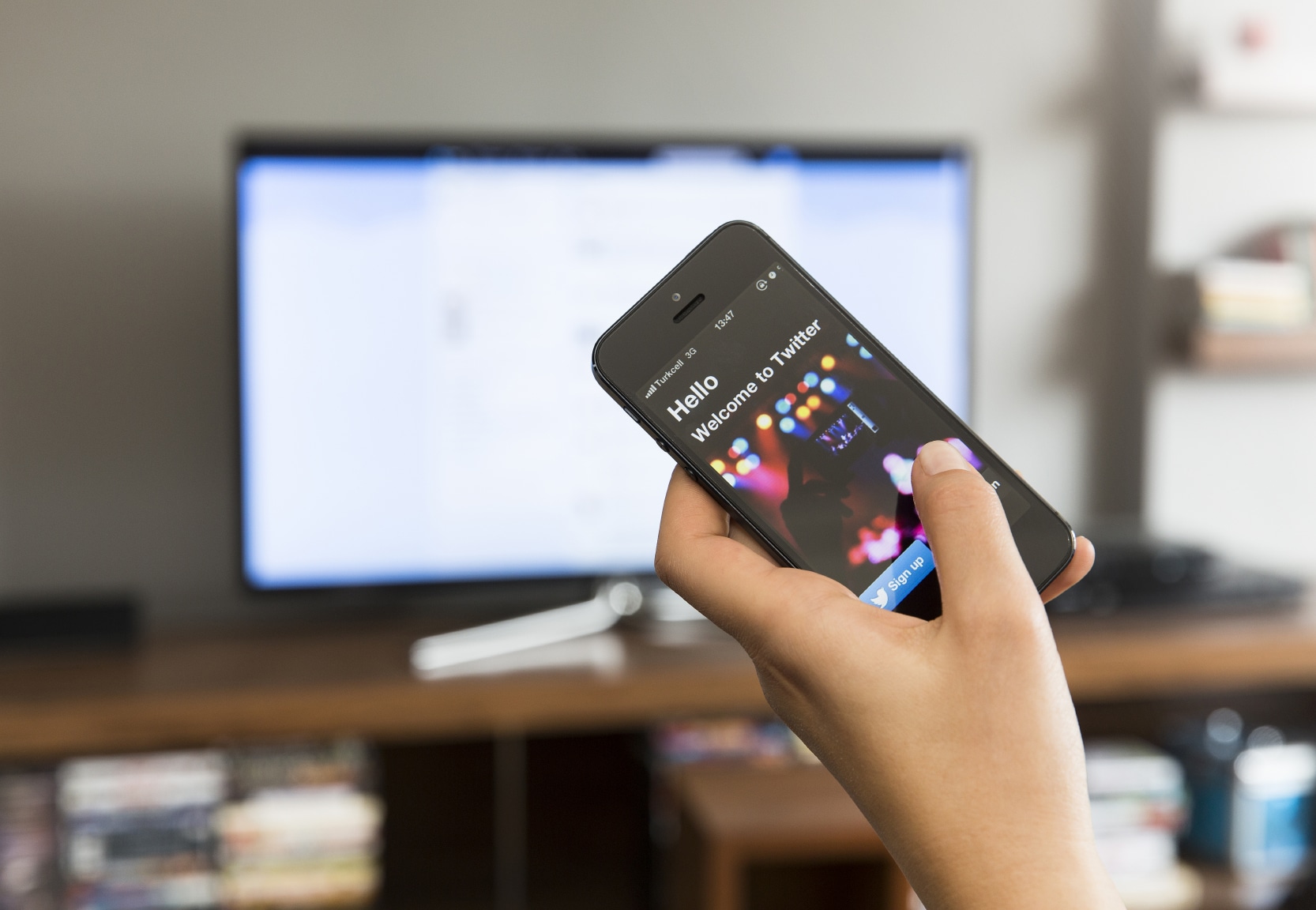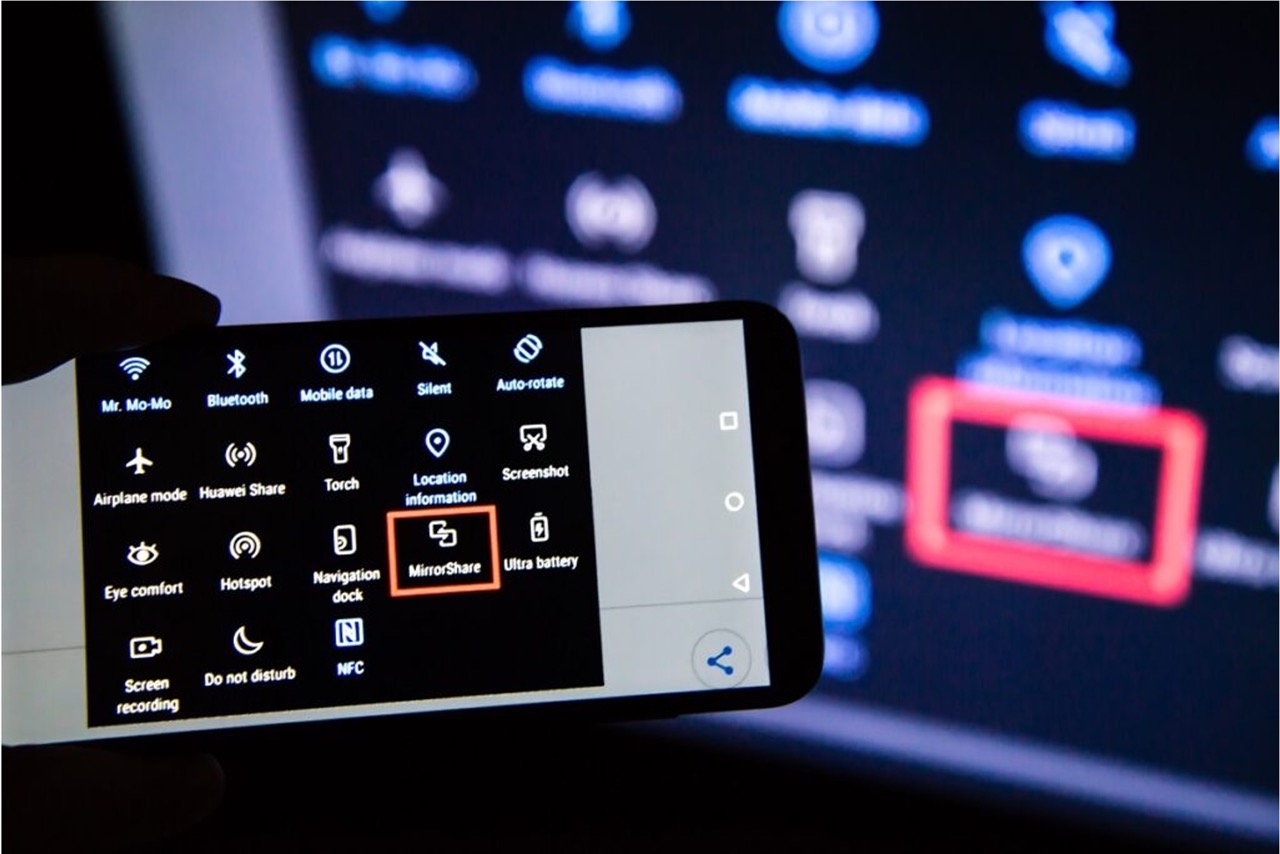Introduction
Are you tired of squinting at your phone screen to watch videos or play games? The good news is that you can easily connect your phone to your TV for a more immersive viewing experience. Whether you want to stream your favorite show or share photos with friends and family, connecting your phone to the TV is a convenient way to enjoy content on a larger screen.
In this guide, we'll simplify the process of connecting your phone to your TV for video playback. You'll learn about the different methods and accessories available, as well as troubleshooting tips to address common issues. By the end of this guide, you'll be equipped with the knowledge and confidence to seamlessly connect your phone to your TV and unlock a whole new level of entertainment.
Let's dive into the world of video playback and discover how easy it is to bridge the gap between your phone and TV. Whether you're a tech enthusiast or a casual user, this guide is designed to demystify the process and empower you to make the most of your devices. So, grab your phone, grab your TV remote, and let's embark on this journey to simplify phone-to-TV connections.
Understanding Video Playback
Video playback refers to the process of displaying audio-visual content on a screen, such as a TV or monitor, from a digital source, like a smartphone. This digital content can include movies, TV shows, home videos, and even mobile games. With the increasing popularity of streaming services and mobile apps, the demand for seamless video playback from phones to TVs has grown significantly.
When it comes to connecting your phone to your TV for video playback, there are several methods to consider. Wireless technologies, such as screen mirroring and casting, allow you to project your phone’s display onto the TV without the need for physical cables. On the other hand, using cables and adapters provides a reliable and straightforward way to establish a connection between your phone and TV.
Understanding the different video playback methods and their compatibility with your devices is crucial for a successful connection. Factors such as the type of phone, TV model, and available ports play a significant role in determining the most suitable approach for seamless video playback. Additionally, being aware of the capabilities and limitations of each method empowers you to make informed decisions based on your specific needs and preferences.
As we delve deeper into the realm of phone-to-TV connections, it’s essential to grasp the fundamentals of video playback and the various technologies that facilitate this process. By gaining a clear understanding of how video content is transmitted from your phone to the TV, you’ll be better equipped to navigate the next steps of selecting the right accessories and setting up the connection.
Connecting Your Phone to Your TV
Connecting your phone to your TV opens up a world of possibilities for enjoying content on a larger screen. Whether you want to stream videos, share photos, or play mobile games with friends and family, establishing a reliable connection between your phone and TV is the first step towards an enhanced viewing experience. Let’s explore the different methods for connecting your phone to your TV and the essential steps involved in the process.
One of the most common methods for connecting your phone to the TV is through a physical cable or adapter. By utilizing the appropriate cable or adapter, you can establish a direct connection between your phone and the TV’s HDMI, USB, or other compatible ports. This method is known for its reliability and simplicity, making it a popular choice for users who prioritize stability and ease of use.
Alternatively, wireless technologies such as screen mirroring and casting offer a convenient way to project your phone’s display onto the TV without the need for physical connections. With screen mirroring, your phone’s screen is replicated on the TV in real-time, allowing you to navigate apps and content seamlessly. Casting, on the other hand, enables you to stream media from compatible apps directly to the TV, providing a versatile and user-friendly experience.
When connecting your phone to the TV, it’s essential to consider the compatibility of your devices and the available connectivity options. Whether you opt for a wired or wireless connection, ensuring that your phone and TV support the chosen method is crucial for a successful setup. Additionally, familiarizing yourself with the specific steps for each connection method will streamline the process and minimize potential challenges.
As we embark on the journey of connecting your phone to your TV, we’ll delve into the intricacies of choosing the right cable or adapter and setting up your TV to accommodate phone connections. Whether you’re a tech-savvy enthusiast or a first-time connector, this guide is designed to simplify the process and empower you to harness the full potential of your devices for immersive video playback.
Choosing the Right Cable or Adapter
When it comes to connecting your phone to your TV, selecting the right cable or adapter is a critical decision that directly impacts the success of the connection. The choice of cable or adapter depends on the compatibility between your phone and TV, as well as the available ports and functionalities of both devices. Let’s explore the essential factors to consider when choosing the appropriate cable or adapter for seamless phone-to-TV connections.
If your phone and TV both support HDMI connectivity, using an HDMI cable is often the most straightforward and reliable option. HDMI cables are widely compatible and capable of transmitting high-definition audio and video signals, delivering a superior viewing experience. Additionally, some phones may require a USB-C to HDMI adapter to facilitate the connection, especially if the phone’s port differs from the TV’s HDMI input.
For devices that do not support HDMI, alternative options such as MHL (Mobile High-Definition Link) cables or adapters may be suitable. MHL technology enables the transmission of audio and video from a mobile device to a display, typically through the USB port. By selecting an MHL-compatible cable or adapter that matches the ports on your phone and TV, you can establish a seamless connection for video playback.
When choosing a cable or adapter, it’s essential to verify the compatibility of the devices and ports involved. Some phones may require specific adapters or cables based on their manufacturer and model, so conducting a quick compatibility check can prevent compatibility issues and ensure a smooth connection process. Additionally, considering the length and durability of the cable or adapter is important for practical and long-term use.
As technology continues to evolve, wireless connectivity options such as Bluetooth and Wi-Fi Direct are also worth exploring for phone-to-TV connections. While these methods do not rely on physical cables or adapters, they offer a convenient and versatile way to establish a wireless link between your phone and TV, providing flexibility in how you enjoy video playback.
By understanding the compatibility requirements and available options for cables, adapters, and wireless connectivity, you can make an informed decision when selecting the right accessory for connecting your phone to your TV. As we delve into the next steps of setting up your TV for phone connection, you’ll be equipped with the knowledge to seamlessly integrate your devices for an enhanced viewing experience.
Setting Up Your TV for Phone Connection
Before you can enjoy seamless video playback from your phone on the TV, it’s essential to ensure that your TV is set up to accommodate phone connections. Whether you’re using a physical cable, adapter, or wireless technology, configuring your TV’s settings and inputs is a crucial step in establishing a reliable and user-friendly connection. Let’s explore the essential steps for setting up your TV to seamlessly connect with your phone.
First, identify the available input ports on your TV that are compatible with your phone’s connectivity options. Common input ports include HDMI, USB, and MHL, each serving as a gateway for establishing a direct connection between your phone and the TV. Depending on the method you’ve chosen for the connection, select the appropriate input port on your TV and ensure that it’s readily accessible for connecting the cable or adapter.
If you’re using a physical cable or adapter, it’s important to insert one end into the designated port on your phone and the other end into the corresponding input port on the TV. Once the physical connection is established, switch your TV to the correct input source using the remote control or on-screen menu. This step ensures that the TV recognizes the connected phone and displays the content seamlessly.
For wireless connectivity methods such as screen mirroring and casting, enabling the necessary settings on your TV is essential for initiating the connection. Many modern TVs feature built-in support for wireless streaming technologies, allowing you to effortlessly project your phone’s display onto the TV. Access the TV’s settings menu to activate screen mirroring or casting functionalities, and follow the on-screen instructions to pair your phone with the TV.
Some TVs may require firmware updates or additional apps to fully support wireless connectivity with phones. Checking for software updates and installing any recommended apps can enhance the compatibility and performance of the phone-to-TV connection. Additionally, familiarize yourself with the specific instructions provided by the TV manufacturer for enabling wireless connectivity features.
By carefully setting up your TV to accommodate phone connections, you’ll pave the way for a seamless and enjoyable video playback experience. Whether you prefer the reliability of physical connections or the convenience of wireless technology, configuring your TV for phone connection is a vital step in unlocking the full potential of your devices for sharing content and entertainment.
Troubleshooting Common Issues
While connecting your phone to your TV for video playback is generally straightforward, it’s not uncommon to encounter occasional issues that may disrupt the seamless flow of content. Understanding and addressing these common issues can help you overcome challenges and ensure a smooth and uninterrupted viewing experience. Let’s explore some troubleshooting tips for addressing common issues that may arise during phone-to-TV connections.
One common issue when using physical cables or adapters is the failure to establish a stable connection between the phone and TV. If you encounter this issue, start by ensuring that the cable or adapter is securely connected to both devices. Additionally, verifying the compatibility of the cable or adapter with your phone and TV is crucial, as using incompatible accessories may result in connection issues.
For wireless connectivity methods such as screen mirroring and casting, network-related issues can occasionally impact the stability of the connection. If you experience lag or interruptions during wireless playback, optimizing your Wi-Fi network by reducing interference and increasing signal strength can improve the overall performance of the connection. Additionally, ensuring that both your phone and TV are connected to the same Wi-Fi network is essential for seamless wireless streaming.
If you encounter audio or video playback issues, such as distorted sound or pixelated visuals, adjusting the display and audio settings on your TV can often resolve these issues. Tweaking settings such as resolution, aspect ratio, and audio output can optimize the playback quality and ensure a more immersive viewing experience.
Occasionally, software updates for your phone or TV may introduce compatibility issues that affect the phone-to-TV connection. Keeping both devices up to date with the latest firmware and software updates can address potential compatibility issues and enhance the overall performance of the connection.
If you encounter persistent issues that seem to defy troubleshooting efforts, reaching out to the customer support channels of your phone and TV manufacturers can provide valuable assistance. Their technical support teams can offer personalized guidance and solutions tailored to your specific devices and connection setup, helping you address complex issues effectively.
By familiarizing yourself with these troubleshooting tips and potential solutions, you’ll be better equipped to address common issues that may arise during phone-to-TV connections. As you navigate the process of connecting your phone to your TV, having the knowledge and resources to troubleshoot and resolve issues ensures a seamless and enjoyable video playback experience.
Conclusion
As we conclude our exploration of simplifying phone-to-TV connections for video playback, it’s evident that bridging the gap between your phone and TV can significantly enhance your viewing experience. Whether you prefer the reliability of physical connections or the convenience of wireless technology, the process of connecting your phone to your TV is within reach for users of all technical backgrounds.
Understanding the various methods for connecting your phone to your TV, from using cables and adapters to leveraging wireless technologies, empowers you to select the most suitable approach based on your devices and preferences. By choosing the right cable or adapter and configuring your TV for phone connections, you can seamlessly integrate your devices and unlock a whole new realm of entertainment possibilities.
While troubleshooting common issues is an inevitable part of the connection process, being equipped with the knowledge to address potential challenges ensures a smooth and uninterrupted viewing experience. Whether it’s optimizing your Wi-Fi network for wireless streaming or verifying the compatibility of accessories, troubleshooting common issues allows you to overcome obstacles and enjoy seamless video playback.
Ultimately, the journey of connecting your phone to your TV is a gateway to sharing cherished moments, exploring captivating content, and immersing yourself in a larger-than-life viewing experience. Whether you’re streaming your favorite show, sharing memories through photos, or indulging in mobile gaming on the big screen, the connection between your phone and TV opens up a world of possibilities.
As technology continues to evolve, the landscape of phone-to-TV connections will undoubtedly expand, offering new features and capabilities for users to explore. Embracing these advancements and staying informed about the latest connectivity options ensures that you can continue to enjoy seamless and immersive video playback experiences in the ever-changing digital landscape.
So, as you embark on your journey of connecting your phone to your TV for video playback, remember that the possibilities are endless, and the world of entertainment is at your fingertips. With the knowledge and confidence gained from this guide, you’re well-prepared to elevate your viewing experience and make the most of your devices for shared moments and captivating content.







